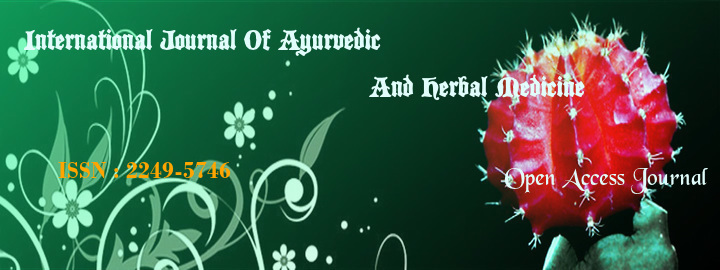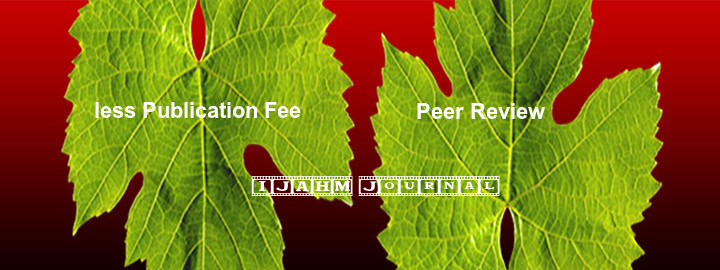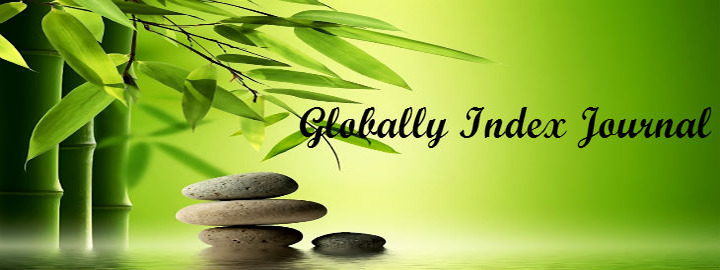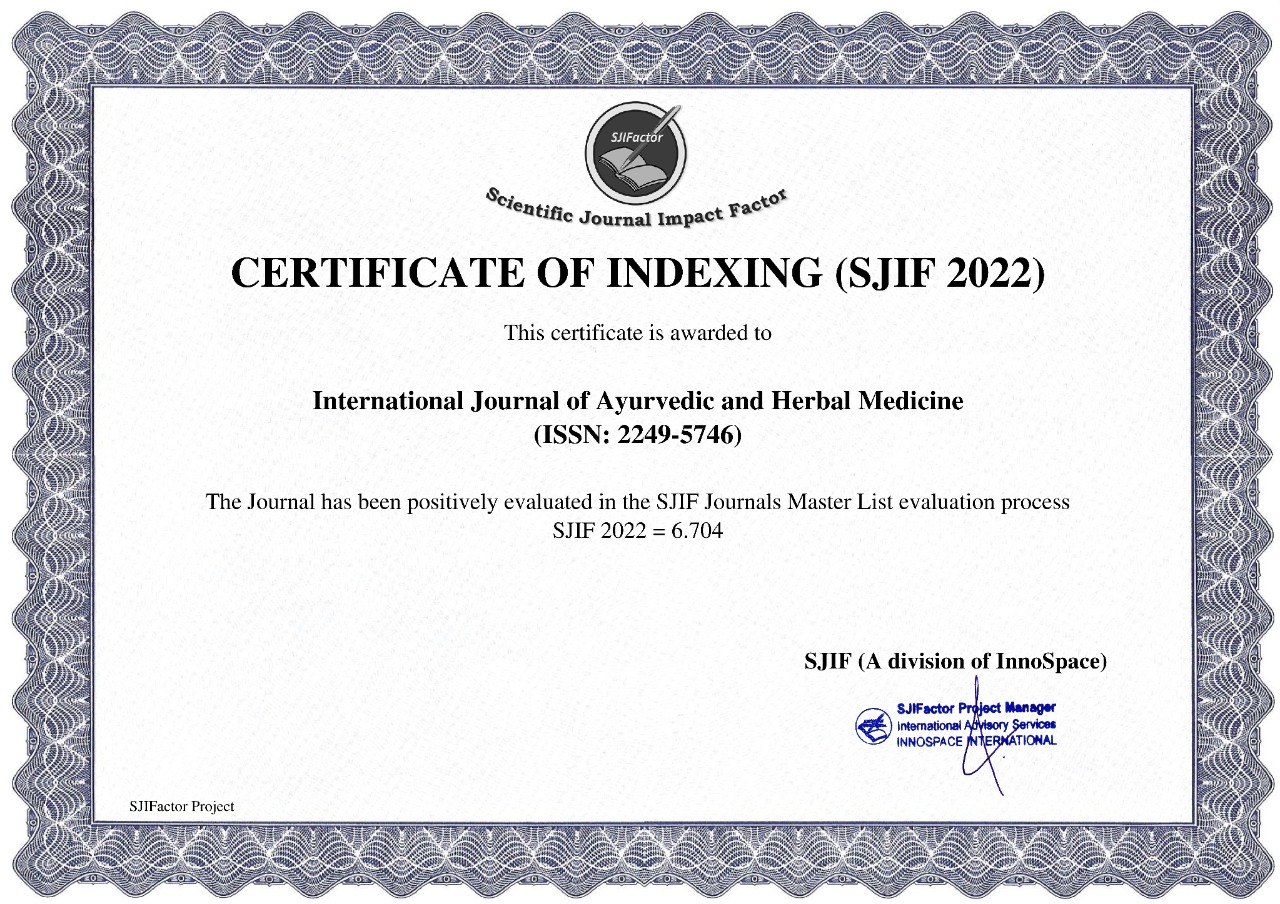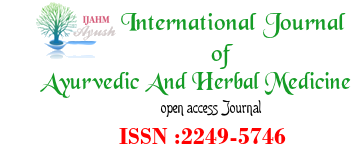


Authors : 1Sud Khyati Sushant 2 Sud Sushant S 3 C.H.Babaria
Abstract : Tvak (skin) is not only an important enveloping protective layer of the body but also a sense organ. There are many references about the Tvak in different classics, starting from Samhita and Sangrah Granthas, yet there is no symmetrically arranged knowledge about this vital organ of the body is available at one place. Tvak vikaras are widely prevalent in the society and detailed description of these disorders with etiological factors including hereditary ones; symptomatology and therapeutic measures have been described in a very scattered manner in Ayurved classics. The skin is not only important for studying the structure and function, but also application of the same in understanding the disorders arise out of it. Unlike as in the other systems of medicines like allopathic system where the separate dermatology has been developed our system has no such separate branch, but our Acharyas have mentioned various formulations for the skin disorders. In our Ayurved classics many different Bahya kalpanas (External Applications) have been mentioned which are used for both preventive as well as curative aspect, but while searching down the texts very scattered references are available regarding the understanding of functions of different external applications on the skin. For the proper and practical understanding of functional aspect of Bahya Kalpana, it is necessary to study this aspect in the light of knowledge of both Modern and Ayurvedic concepts. In other words synthesis of ancient and modern concepts will be a worth consideration, so this present study focuses on the functional overview of the formulations used for Bahya kalpana in Tvak vikaras.
Title : Conceptual Study on Nidana And Samprapti Of Rajayakshma
Authors : Dr.Shashirekha.H.K. MD(Ayu) (Ph.D) Dr. Bargale Sushant Sukumar MD(Ayu)
Rajayakshma is a Madhyama Rogamarga Vyadhi manifested Shosha. Due to indulging in Sahasa, Vega Sandarana, Kshaya, Vishamashana, there is the manifestation of Ekadasha Rupa where it affects the Tridosha and Sapta Dhatu. Ayurveda classics gives importance to Nidana because it is a Sarva Tantra Siddanta that effect will always be going to imitate the cause i.e. Karya Karana Bhava. Before understanding Chikitsa the knowledge of nidana and the samprati is very necessary. Chikitsa is nothing but the Nidana Parivarjana and Samprapti Vighatana. Aims and Objectives: To enlighten the basic concept of nidana and samprapti of rajayakshma to its full perspective. To understand this concept and utilize it thoroughly in planning the proper treatment for rajayakshma. Materials and Methods: In this study Ayurveda elementary books were thoroughly searched to compile information about rajayakhma to evaluate the nidana and samprapti of the disease. Conclusion- Rajayakshma is an unique disease the classification of disease has been don on the base of Nidana and Samprapti. According to the involved Nidana as Rajayakshma devided as Sahasajanya Rajayakshma, Vega Sandarana janya Rajayakshma, Kshaya janya Rajayakshma, and Vishamashana janya Rajayakshma. As per the process of disease Rajayakshma is classified as anuloma Kshaya and pratiloma kshaya.
Authors : Bose Amartya,
Abstract : The objective of this communication is to spread the awareness of Ayurvedic Pharmaceutical technologies to restore our traditional medicinal system and to bring focus on its specialized pharmaceutical technicians and the newly emerging Ayurvedic pharmaceutical scholars who are now-a-days deviating from their core fields due to negligence, lack of pay, no support from the government neither private organizations or Ayurvedic manufacturing companies nor placement authorities in the Universities
Authors : Swadhin Ranjan Behera1, Sekkizhar M2, Sarath Babu
Abstract : The effects of aqueous seed extract of Syzygium cumini (S.C) on hepatoprotection in streptozotocin (STZ) –induced diabetic rats were investigated. G-A serves as control, G-B serves diabetic control, G-C administered standard oral hypoglycemic drug, G-D and E administered two graded doses of seed extract. STZ was administered to rats after 72 hours blood glucose was estimated. Rats showed more than 200mg/dl glucose level considered in to diabetic rats. The selected diabetic rats were divided in to G-B, C, D and E. The G-B considered diabetic control group and G-C, D and E groups given their respective drugs for 120 days. On 120th day blood was collected from the all the groups and liver enzymes like AST, ALT, ALP, GGT were estimated by using auto-analyzer. Study results showed increased liver enzymes in G-B compared to all the groups. Standard and S.C 500mg/kg groups showed significant decrease in liver enzymes compared to other groups. Low dose of seed extract had less protective effect compared to high dose. From the study results, it can conclude that administration aqueous extract of S.C seed powder showed liver protective effect. There is requirement of more studies to isolate active compound form the seed powder.
index







